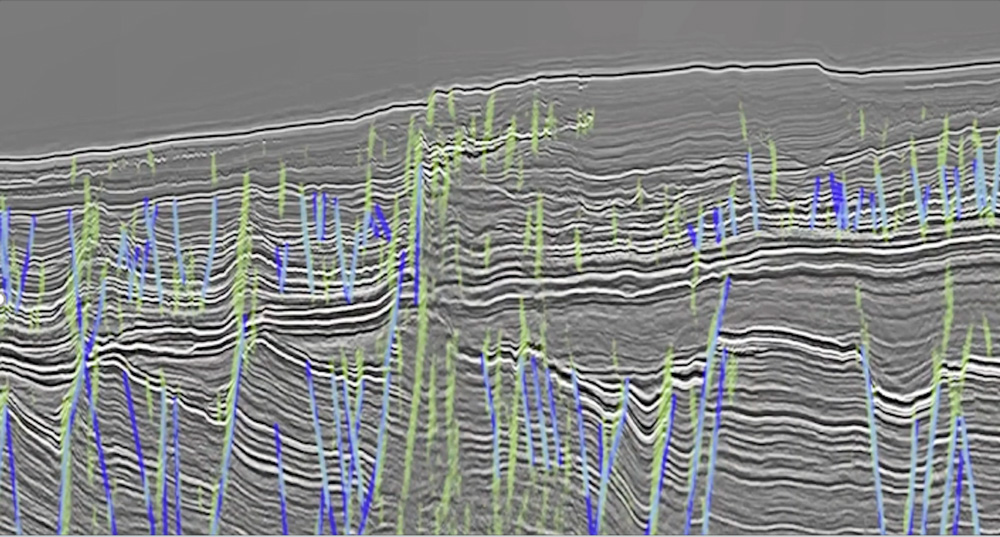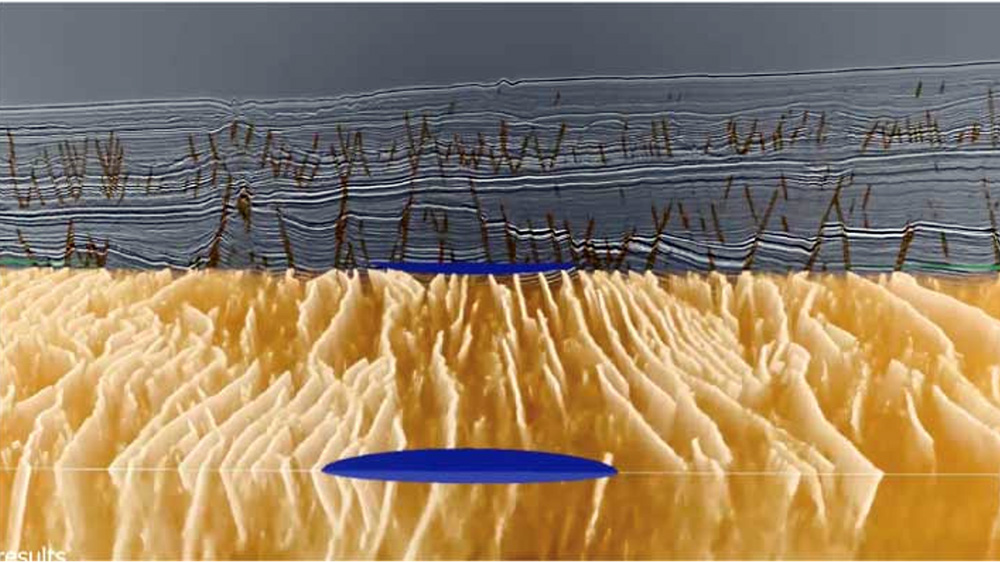Dramatic improvements in operational efficiency are possible, thanks to advances in software and new applications of analytics. Welcome to an interview with Andy James, chief product officer at Bluware. Andy talks to us today about what Bluware has accomplished, but also what will be necessary for the future.
What is your name and your background?
I’m Andy James, Chief Product Officer at Bluware, with more than 30 years of oil and gas experience focused on commercial software delivery, product management, and product life cycle.
I joined Bluware in February 2019, prior to which I served 10 years at IHS Markit where I led the global software development organization for the upstream oil and gas business. Key contributions include, leading the geoscience software organization, migration of key platform technologies to the cloud, and Agile development transformation. I also spent 20 years in global roles with Halliburton, Halliburton Integrated Solutions, KBR, and Landmark Graphics.
What is Bluware and what products and services does it offer?
Bluware is a very innovative software engineering company. Our technology enables the oil and gas industry to explore the full value of their data without the limitations forced by data size and current software. We help E&P companies increase workflow productivity to make faster and smarter decisions that reduce time to oil discovery as well as time to first oil.
Seismic data is only one data type, but seismic represents the largest amount of data in any oil and gas company. Bluware conceived a data technology that overcomes the inherent limitations in existing seismic data formats. The company began developing Volume Data Store (VDSTM) two decades ago to unlock the efficiencies that modern day computing provides. Visualization of large pre-stack seismic data sets and cost-effective cloud storage can now be achieved without disrupting current geoscience interpretation application workflows.
VDS significantly reduces costs when you store subsurface data in the cloud. With Bluware VDS you can compress raw and imaged volumes of seismic data sets that are adaptable and scalable depending on your business needs, workflows, and visualization requirements.
What are some limitations of current cloud solutions that are used to process seismic data?
Historically, oil and gas companies consume most of the world’s high-performance computing (HPC) for processing seismic data to deliver an image of the subsurface, but the demand for HPC peaks only a few times a year. Cloud solutions can give these organizations the ability to scale up and down purely based on demand, so they can pay only for what they need and use.
Organizations without a digital solution for their subsurface data must purchase the necessary disk space for the high volume of seismic data they use only occasionally, but most of the disk space that is not used becomes obsolete. On the other hand, cloud providers are constantly scaling up. As a consumer, the pay-as-you go model allows companies to scale up and scale down data storage at a moment’s notice.
To enable the interpretation of vast quantities of seismic data, reduce the time geoscientists spend on administrative work, and provide data-informed insights to identify hydrocarbons more efficiently, the industry must move to the cloud.
In other words, for major oil and gas companies, the question is no longer whether to use contemporary cloud technology; it’s how to overcome inherent limitations in existing seismic data formats and streamline cloud implementation.
One of the most common legacy media types, the SEG-Y file format, was created in 1975 for tape storage. Like a cassette tape that forces listeners to fast-forward through all the songs before getting to the one they want to hear. These trace-based file systems are stored sequentially.
Moving seismic data in SEG-Y format to the cloud is no simple lift and shift task. Most applications that work with SEG-Y data were developed 20 years ago. To overcome the limits of SEG-Y, internal formats were created to load the data from SEG-Y, creating a paradigm that requires SEG-Y data to be copied to the local applications.
Sequential storage makes those formats very inefficient in a cloud setting, where data is expected to be stored in an “object” format, unlike files on your PC. Imposing a file system in the cloud doesn’t take advantage of the speed of the cloud and slows down access significantly. It’s also a very expensive option.
How is seismic interpretation changing with new cloud solutions that were not possible before?
It’s no surprise that companies are reluctant to move petabytes of seismic data to the cloud. Bluware VDS technology overcomes the inherent limitations in existing seismic data formats.
Bluware VDS is a cloud-native object format providing unlimited storage and lightning fast read access. Compression of seismic datasets become highly adaptable and infinitely scalable.
Data can be read in any direction faster than it would be to copy it from memory. Adaptive streaming capabilities make it possible to quickly display a time slice on a mobile device or conduct a calculation on a desktop computer or a cloud compute node. Compression is built into the system, so when a project starts, the user can easily stream data at the appropriate compression level to and from the cloud, saving time and costs. Streaming data eliminates the need to copy data to workflows.
Bluware Flexible Access Storage Transcoding (FASTTM) converts 2D, 3D, stacked, and pre-stack seismic data in VDS format and streams it to a user’s interpretation application. It does so by acting as a translator between VDS and the read requests made by the application in the format the legacy application uses. This is a significant benefit for data management processes as it enables a single source of data in a central location, as opposed to having to copy and convert data multiple times for specific applications to run.
Can one simply go to Microsoft or Amazon and sign up for Azure or AWS and expect all your problems to be solved immediately?
Microsoft and Amazon provide a platform for companies to move their data and workflows to the cloud, however a pure lift and shift of applications to the cloud is not the ideal way to utilize the power of cloud solutions. Both the data and applications must be transformed into true cloud-native versions to harness the compute and scale out capabilities of the cloud. Bluware VDS for example is a true cloud-native format. An open source implementation of VDS is available through OSDU. As adoption for this grows, independent software companies will develop micro-services and cloud applications which will be available for customers to integrate into their own workflows.
How do the analytical needs for seismic, production, and geological data differ from data used for example in detecting patterns in consumer behavior? Is it useful to have domain experts? Who are they?
We cannot compare seismic, production, and geological data to data gathered from consumer behavior directly, however in terms of pattern recognition, we can use machine learning to analyze patterns in subsurface data. Domain experts such as geologists, geophysicists, and drilling and production engineers are required to provide their expertise in their respective domains.

Figure 1: Interpreter labeled the faults in blue and observed the inference shown in green in real-time, until the results were desirable.
What are some of the paths forward?
As an example of the efficiency and accuracy gains of cloud computing and machine learning, a recent study used Bluware's VDS data format and interactive deep learning technology to assist interpreters in tedious tasks involving seismic fault and chimney interpretation workflows. The goal of this study was to accelerate the mapping of shallow hazards.
Usually an interpreter spends weeks or months to fully interpret a survey and its volume. In this case, the interpreter labeled the data (blue faults) and observed the deep learning inference (green faults) in real-time, noted in Figure 1, until the results were desirable.

Figure 2: Using VDS and interactive deep learning technology, these tools can ultimately improve interpretations while helping reduce human error. If geoscientists can save on basic, tedious tasks, more time can be spent improving the results of models, which have a crucial impact on future production.
Bluware’s interactive deep learning technology eliminates data preparation by leveraging the capabilities of VDS. The time spent in data preparation was instantly reduced to zero. The desired results were achieved shown in Figure 2 after performing training on two percent of the in-lines within the volume, accelerating interpretation by 20 times when compared to traditional manual seismic interpretation. Geoscientists did not have to post-process the results, because they were able to conduct quality control during the labeling and training process.